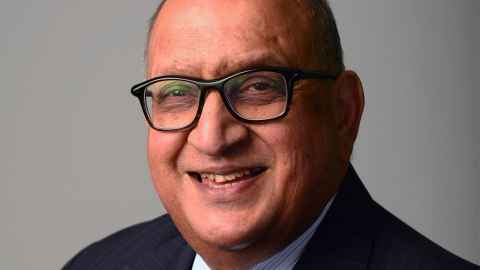Sir Anand Satyanand: new approaches needed in tertiary education
28 October 2020
Opinion: Being forced into online learning due to Covid-19 lockdowns may lead to universities adapting and innovating their teaching methods forever.

In seven months, our world has been transformed by a global pandemic – a threat that was previously the stuff of science fiction. More than 33 million cases of Covid-19 have been recorded around the world, and the number of deaths globally by early October was 1 million. Many more are probable.
Informed by Taiwan and South Korea’s reaction to the virus, the Government here applied restrictions directly, closing the borders and restricting movement to protect the population. This approach had an immediate effect on more than half a million students in tertiary education, 40,000 of whom were from overseas, and three-quarters connected with university courses around the country.
As we know, by the time Semester One was under way, restrictions at the border meant overseas students couldn’t gain entry to the country, and the ability of universities to deliver face-to-face learning programmes was affected by the restrictions imposed to break the chain of Covid-19 transmission.
As a result, coronavirus catalysed a rapid reinvention of New Zealand universities’ teaching and learning programmes. Tertiary institutions quickly shifted learning online for students and planning began to support robust assessment processes for coursework.
Sectors of the economy were placed on life support through the Government’s unprecedented wage-subsidy scheme. The Director-General of Health became a celebrity in his own right, championing a view that “leadership is a call to collective action”. We became familiar with the new language of epidemiology, and the action undertaken by New Zealanders in order to keep vulnerable communities safe from Covid-19 has been remarkable, and this includes the efforts of the Student Volunteer Army assisting communities.
As restrictions have eased, New Zealand has found itself able to return to something resembling normality while the pandemic rages elsewhere. But many people have lost employment, with tourism, retail and hospitality hit hard. Unemployment in young people has risen, with young women making up a disproportionate number of those affected.
The need to provide retraining opportunities for people repositioning themselves in a rapidly evolving economy is a crucial national challenge facing New Zealand.
People have spoken about the need for a reset and reimagining of a knowledge economy, moving beyond the primary industries into the greener areas of design, healthcare innovation and technology. Universities can be a fundamentally important player in this reset – potentially forming hybrid relationships with employers to create experiential learning opportunities for students retraining.
All universities need to keep working on plans to provide entry and managed isolation for incoming students so that we can assist them into study – whether new or resumed – at the first available time.
But the university sector continues to face two key challenges posed by Covid-19. First, a need to adapt and innovate with learning programmes that provide students with safe, high-quality outcomes. The second is the challenge to adapt university business models that have relied heavily on income from international students.
The eight New Zealand universities generated nearly $500 million in aggregated revenue in 2018, and the university sector provides the largest amount of international student fee revenue within the New Zealand education sector. Black ink will be replaced by red in more than one institution in the times ahead, and universities need to shift their business models to respond to this new operating environment, along with every other affected sector.
There is a need for action at a number of levels. First, the Government could collaborate with universities to plan to welcome international students back to Aotearoa, including such strategies as proactive quarantine on top of students’ pre-clearance before travel here. Secondly, all universities need to keep working on plans to provide entry and managed isolation for incoming students so that we can assist them into study – whether new or resumed – at the first available time. Thirdly, the community needs to see students as stakeholders in new systems of high-quality learning and pastoral care, that blends kanohi ki te kanohi or face-to-face engagement with digital channels.
With the pandemic likely to increase inequity and inequality, many students will face greater academic, social and financial obstacles to tertiary study. In the course of a week, universities proved they could be agile by finding ways to enable staff to work remotely, teach students online, provide pastoral care for mental health via technology and financial support for students experiencing hardship.
But the work is not yet complete. Around the world, universities are talking about the hybrid flexible, or HyFlex, course format that combines face-to-face (F2F) and online learning. Hybrid and HyFlex are words and ideas that must be added to all universities’ lexicon.
2020 has changed everything.
The writer, Sir Anand Satyanand, GNZM, QSO, is an alumnus of the University (Law), former Co-Patron of the University of Auckland Society and former Governor-General. He is Chancellor of the University of Waikato.
This article reflects the opinion of the author and is not necessarily that of the University of Auckland.
This article first appeared in the Spring 2020 edition of Ingenio magazine.